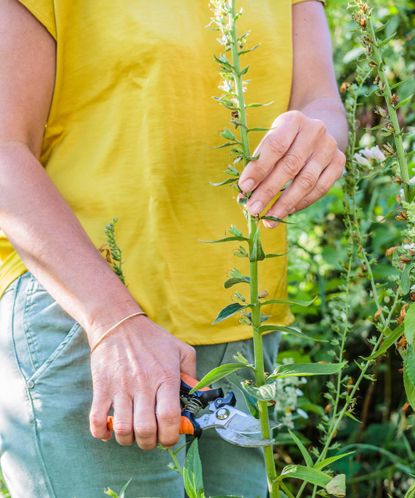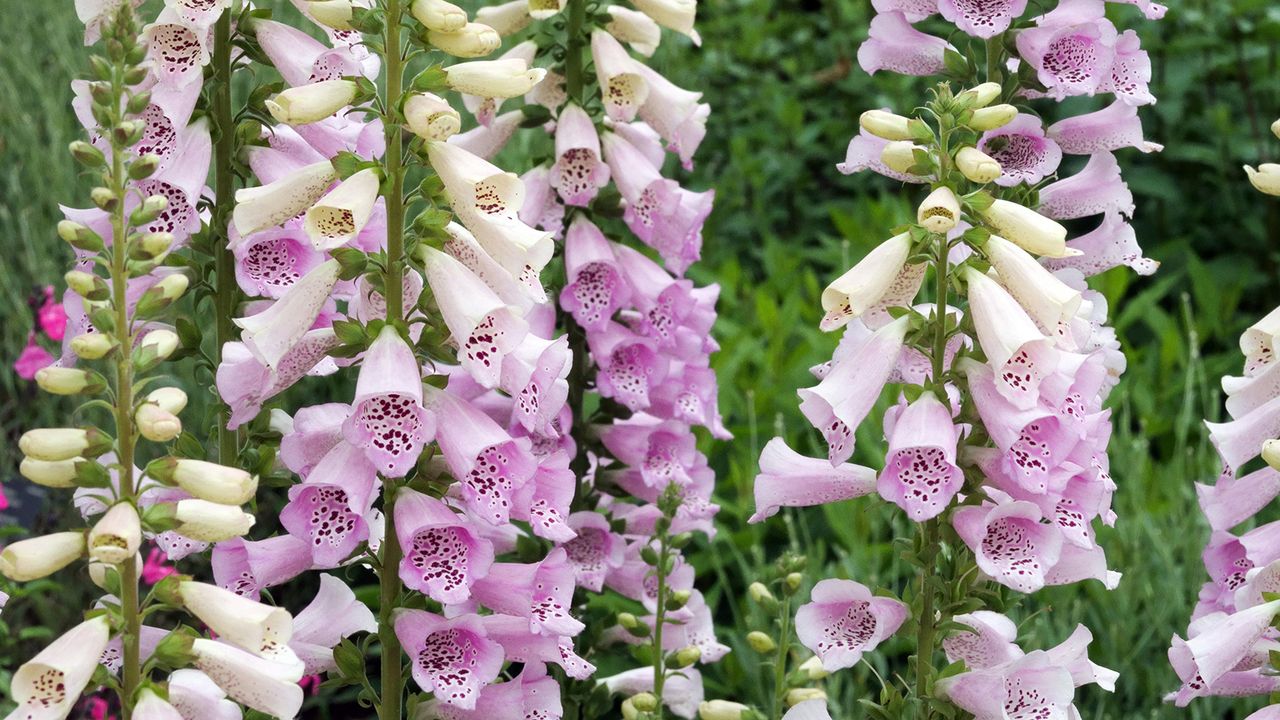Why Pruning is Essential for Foxglove Plants
Pruning is a crucial aspect of maintaining the health and appearance of foxglove plants. By removing dead or damaged leaves and stems, pruning helps promote healthy growth, encourages blooming, and prevents disease. Regular pruning also enables gardeners to maintain the plant’s shape and appearance, ensuring it remains a beautiful addition to any garden or landscape. Foxglove plants, in particular, benefit from pruning as it helps control their height and encourages bushy growth, making them a stunning feature in any garden.
One of the primary benefits of pruning foxglove plants is the promotion of healthy growth. By removing dead or damaged leaves and stems, gardeners can help prevent the spread of disease and encourage the plant to focus its energy on producing new growth. This, in turn, leads to a fuller, healthier plant with more vibrant blooms. Pruning also helps to maintain the plant’s shape, ensuring it remains compact and bushy, rather than leggy and unkempt.
In addition to promoting healthy growth, pruning also encourages blooming in foxglove plants. By removing spent flowers and seed heads, gardeners can help encourage the plant to produce more blooms, leading to a longer flowering season. This is especially important for gardeners who want to attract pollinators, such as bees and butterflies, to their garden. By pruning their foxglove plants regularly, gardeners can help create a welcoming environment for these beneficial insects.
While pruning is an essential aspect of maintaining the health and appearance of foxglove plants, it is also important to note that it can be a bit tricky. Gardeners need to be careful not to over-prune their plants, as this can cause stress and lead to disease or pest problems. However, with the right techniques and tools, pruning can be a simple and effective way to keep foxglove plants looking their best. For those looking to learn more about how to trim foxglove plants, there are many resources available, including online tutorials and gardening books.
When to Prune Foxglove Plants for Best Results
Pruning foxglove plants at the right time is crucial for promoting healthy growth and blooming. The optimal time to prune foxglove plants depends on the plant’s growth stage and the desired outcome. For example, pruning in the spring can help control the plant’s height and encourage bushy growth, while pruning in the fall can help prepare the plant for dormancy.
In general, it’s best to prune foxglove plants during the dormant season, which typically occurs in the fall or winter. During this time, the plant is not actively growing, and pruning will cause minimal stress. Pruning during the dormant season also allows gardeners to remove dead or damaged leaves and stems, which can help prevent disease and pest problems.
However, pruning can also be done during the growing season, typically in the spring or summer. This is a good time to prune foxglove plants that are producing tall stems or leggy growth. By cutting back the stems, gardeners can encourage the plant to produce more blooms and maintain a compact shape.
It’s also important to note that pruning foxglove plants at the wrong time can cause stress and reduce blooming. For example, pruning in the middle of the growing season can cause the plant to focus its energy on producing new growth rather than blooms. Similarly, pruning too much or too little can also cause stress and reduce blooming.
To determine the best time to prune foxglove plants, gardeners should consider the plant’s growth stage and the desired outcome. By pruning at the right time, gardeners can promote healthy growth and blooming, and keep their foxglove plants looking their best. For those looking to learn more about how to trim foxglove plants, it’s essential to understand the importance of timing and technique.
Tools and Techniques for Pruning Foxglove Plants
Pruning foxglove plants requires the right tools and techniques to ensure a safe and effective process. The most essential tool for pruning foxglove plants is a pair of sharp, clean pruning shears. These shears should be specifically designed for pruning plants and should be free of any debris or disease-causing organisms.
In addition to pruning shears, gardeners may also want to wear a pair of gloves to protect their hands from the plant’s sap and any potential thorns. The gloves should be made of a durable material, such as leather or synthetic fabric, and should fit comfortably on the hands.
When pruning foxglove plants, it’s essential to make clean cuts to avoid damaging the plant’s stems or leaves. To make a clean cut, gardeners should cut just above a node, which is the point where a leaf meets the stem. This will help the plant heal quickly and reduce the risk of disease or pest problems.
Another important technique for pruning foxglove plants is to prune in small increments. This will help gardeners avoid over-pruning, which can cause stress to the plant and reduce its blooming potential. By pruning in small increments, gardeners can also monitor the plant’s response to pruning and adjust their technique as needed.
For those looking to learn more about how to trim foxglove plants, it’s essential to understand the importance of using the right tools and techniques. By following these guidelines, gardeners can ensure a safe and effective pruning process that promotes healthy growth and blooming in their foxglove plants.
Some additional tips for pruning foxglove plants include pruning in the morning, when the plant is at its highest water content, and pruning in a well-ventilated area to prevent the spread of disease. By following these tips and using the right tools and techniques, gardeners can keep their foxglove plants looking their best and promote healthy growth and blooming.
Step-by-Step Guide to Trimming Foxglove Plants
Trimming foxglove plants is a straightforward process that requires some basic knowledge and tools. Here’s a step-by-step guide on how to trim foxglove plants:
Step 1: Remove Dead or Damaged Leaves and Stems
Start by removing any dead or damaged leaves and stems from the plant. This will help prevent the spread of disease and encourage healthy growth. Use a pair of sharp, clean pruning shears to make clean cuts just above a node.
Step 2: Cut Back Tall Stems
Cut back any tall stems to about one-third to one-half of their height. This will help control the plant’s height and encourage bushy growth. Make clean cuts just above a node, and remove any weak or spindly growth.
Step 3: Shape the Plant
Use pruning shears to shape the plant to maintain its appearance. Remove any leggy or uneven growth, and trim back any stems that are growing outside of the plant’s natural shape.
Step 4: Monitor and Adjust
After trimming the plant, monitor its response and adjust your technique as needed. Keep an eye out for any signs of stress or disease, and take action promptly if necessary.
By following these steps, gardeners can learn how to trim foxglove plants effectively and promote healthy growth and blooming. Remember to always use sharp, clean pruning shears and make clean cuts to avoid damaging the plant.
It’s also important to note that trimming foxglove plants is an ongoing process that requires regular maintenance. By trimming the plant regularly, gardeners can keep it looking its best and promote healthy growth and blooming.
Common Mistakes to Avoid When Pruning Foxglove Plants
Pruning foxglove plants can be a delicate process, and making mistakes can harm the plant and reduce its blooming potential. Here are some common mistakes to avoid when pruning foxglove plants:
Over-Pruning
One of the most common mistakes when pruning foxglove plants is over-pruning. This can cause stress to the plant and reduce its ability to produce blooms. To avoid over-pruning, prune only what is necessary to maintain the plant’s shape and promote healthy growth.
Pruning at the Wrong Time
Pruning foxglove plants at the wrong time can also cause harm. Pruning during the active growing season can cause stress to the plant and reduce its ability to produce blooms. Prune during the dormant season or after the plant has finished blooming to minimize stress.
Not Making Clean Cuts
Not making clean cuts when pruning foxglove plants can cause damage to the plant and reduce its ability to heal. Use sharp, clean pruning shears to make clean cuts just above a node. This will help the plant heal quickly and reduce the risk of disease or pest problems.
Pruning Too Much of the Plant
Pruning too much of the plant can cause stress and reduce its ability to produce blooms. Prune only what is necessary to maintain the plant’s shape and promote healthy growth. Leave as much of the plant intact as possible to minimize stress.
Not Monitoring the Plant’s Response
Not monitoring the plant’s response to pruning can cause harm. Monitor the plant’s response to pruning and adjust your technique as needed. If the plant is showing signs of stress or disease, take action promptly to prevent further harm.
By avoiding these common mistakes, gardeners can learn how to trim foxglove plants effectively and promote healthy growth and blooming. Remember to always use sharp, clean pruning shears and make clean cuts to avoid damaging the plant.
Pruning Foxglove Plants for Different Growth Stages
Pruning foxglove plants at different growth stages can help promote healthy growth and blooming. Here’s a guide on how to prune foxglove plants at different growth stages:
Seedlings
When pruning seedlings, it’s essential to be gentle and avoid damaging the delicate stems and leaves. Remove any weak or spindly growth, and trim back the stems to encourage bushy growth. This will help the seedlings develop a strong root system and promote healthy growth.
Young Plants
Young foxglove plants require regular pruning to promote healthy growth and blooming. Remove any dead or damaged leaves and stems, and trim back the stems to encourage bushy growth. This will help the plant develop a strong root system and promote healthy growth.
Mature Plants
Mature foxglove plants require less frequent pruning, but still need regular maintenance to promote healthy growth and blooming. Remove any dead or damaged leaves and stems, and trim back the stems to maintain the plant’s shape and appearance. This will help the plant continue to produce blooms and maintain its overall health.
Pruning at different growth stages can help promote healthy growth and blooming in foxglove plants. By following these guidelines, gardeners can learn how to trim foxglove plants effectively and promote healthy growth and blooming.
It’s also important to note that pruning foxglove plants at different growth stages can help control pests and diseases. By removing infected or infested areas, gardeners can help prevent the spread of disease and reduce the risk of pest infestations.
By incorporating pruning into their regular maintenance routine, gardeners can help promote healthy growth and blooming in their foxglove plants. Remember to always use sharp, clean pruning shears and make clean cuts to avoid damaging the plant.
Pruning Foxglove Plants for Pest and Disease Control
Pruning foxglove plants can help control pests and diseases, which can harm the plant and reduce its blooming potential. By removing infected or infested areas, gardeners can help prevent the spread of disease and reduce the risk of pest infestations.
Removing Infected or Infested Areas
When pruning foxglove plants for pest and disease control, it’s essential to remove any infected or infested areas. This can include removing leaves or stems that are infested with pests, such as aphids or whiteflies, or removing areas that are infected with diseases, such as powdery mildew or leaf spot.
Promoting Air Circulation
Promoting air circulation is also important for preventing the spread of disease and reducing the risk of pest infestations. By pruning foxglove plants to allow for good air circulation, gardeners can help prevent the spread of disease and reduce the risk of pest infestations.
Pruning for Pest Control
Pruning foxglove plants can also help control pests, such as aphids and whiteflies. By removing infested areas and promoting air circulation, gardeners can help reduce the risk of pest infestations and prevent the spread of disease.
Pruning for Disease Control
Pruning foxglove plants can also help control diseases, such as powdery mildew and leaf spot. By removing infected areas and promoting air circulation, gardeners can help prevent the spread of disease and reduce the risk of pest infestations.
By incorporating pruning into their regular maintenance routine, gardeners can help promote healthy growth and blooming in their foxglove plants. Remember to always use sharp, clean pruning shears and make clean cuts to avoid damaging the plant.
Learning how to trim foxglove plants effectively can help gardeners promote healthy growth and blooming, while also controlling pests and diseases. By following these guidelines, gardeners can help keep their foxglove plants healthy and thriving.
Maintenance and Care After Pruning Foxglove Plants
After pruning foxglove plants, it’s essential to provide proper maintenance and care to promote healthy regrowth and blooming. Here are some tips to help you care for your foxglove plants after pruning:
Watering
Water your foxglove plants regularly, but make sure not to overwater. Foxglove plants prefer well-draining soil and can be susceptible to root rot if the soil is too wet. Water your plants when the top inch of soil feels dry to the touch.
Fertilizing
Fertilize your foxglove plants regularly to promote healthy growth and blooming. Use a balanced fertilizer that is high in phosphorus to promote blooming. Follow the instructions on the fertilizer package for application rates and timing.
Monitoring for Pests and Diseases
Monitor your foxglove plants regularly for pests and diseases. Check for signs of infestation or infection, such as aphids, whiteflies, or powdery mildew. If you notice any problems, take action promptly to prevent the spread of disease or pest infestations.
Pruning
Continue to prune your foxglove plants regularly to promote healthy growth and blooming. Remove any dead or damaged leaves or stems, and cut back tall stems to maintain the plant’s shape and appearance.
By following these tips, you can help promote healthy regrowth and blooming in your foxglove plants after pruning. Remember to always use sharp, clean pruning shears and make clean cuts to avoid damaging the plant.
Learning how to trim foxglove plants effectively can help gardeners promote healthy growth and blooming, while also controlling pests and diseases. By following these guidelines, gardeners can help keep their foxglove plants healthy and thriving.







